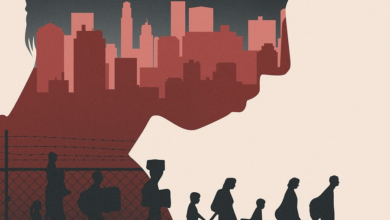Careful Giving Up Your Career To Be A Stay-At-Home Parent

In April 2017, I made a commitment to be a stay-at-home parent for the first five years of my son’s life. When my daughter was born in December 2019, I made the same commitment for the sake of equality.
Research shows that the first five years are the most crucial for a child’s development. Supposedly, 90% of a child’s brain develops by age 5. Since I was unemployed anyway, I decided to transition into full-time parent mode.
Now that my daughter is finally starting school full-time in September five years later, I want to reflect on this experience—especially for those of you who are considering giving up your career to be a stay-at-home parent.
Your Probably Shouldn’t Give Up Your Career For Your Kids
Unless your spouse makes a substantial income or you’re already financially independent, giving up your career to raise your child may lead to more stress and conflict than it’s worth. The more ambitious you are, the less you should be a stay-at-home parent.
I fully understand why some couples divorce after having kids. Being a full-time parent tests you in every possible way. And no matter how hard you try, you may often feel like your efforts are neither good enough nor appreciated enough.
If your spouse doesn’t appreciate you after you give up your career, you are going to be mighty bitter! Going to work is much easier than being a full-time parent, especially if you can work from home and have a flexible schedule.
Before you give up your career for your kids, you must plan carefully. Do not think everything will work out the way you want because it probably won’t!
Nobody Really Cares How Much Work You Do As A Parent
Nobody asked you to have kids, so nobody cares how much work you do as a parent. You could be up for 20 hours a day because your baby or toddler won’t sleep, and you will get zero reward for your hard work.
On the other hand, if you’re burning the midnight oil at work, your manager will eventually recognize your efforts. Not only will you likely receive words of encouragement, you may also get a raise and a promotion!
If you decide to be the stay-at-home parent, your spouse may initially appreciate your work. But over time, they will take you for granted because that’s what they get used to. They might think, “Of course you have to take care of the kids because I’m busy earning money!” Never stop saying thank you, no matter how redundant it seems.
The working partner will have to deal with their own stresses at work and may think you have the easier job. This will make you annoyed, and perhaps even sad that your efforts are not recognized. You may much prefer commuting to work while listening to your favorite podcast, typing on the computer for several hours, and then grabbing lunch with colleagues instead of childcare.
To be a stay-at-home parent, you must love children and love the role of being a parent. If you are not at least 70% intrinsically motivated by parenthood, you will eventually become unhappy. The thing is, you won’t know what your true intrinsic motivation is until after you give up your career.
Solution: Limit Your Stay-At-Home Parenthood To Three Years Max
In hindsight, committing to five years as a stay-at-home dad for each child was excessive. One year is good enough, with a maximum of two years for fathers and three years for mothers. By age three, children become eligible for preschool, which was our initial plan.
However, just before our son’s third birthday, the onset of COVID prompted us to withdraw him from preschool, leading us to homeschool him for the subsequent 18 months. Then our daughter was born four months before lockdowns, so I was stuck at home anyway. I figured I might as well make the most of it.
One-to-three years is a long-enough amount to create a strong bond with your child. You’ll see all of the amazing, priceless milestones like cooing, smiling, crawling, standing, walking, and talking. Before and after work, and the weekends are plenty to spend with your children. At the same time, you won’t be away from your career long enough for it to suffer.

Within three years, you should still be able to get a similar job with similar pay where you left off. You’ll also never have to wonder what it was like to be a stay-at-home parent. People job hop every two-to-three years all the time. Treat your time raising your kids full-time like any other job.
The other benefit of going back to work after two years is that it reduces the chances of your spouse taking you for granted. Only after you return to work will your spouse really appreciate how much you did at home. It’s always that way—you have to lose something to fully appreciate it.
Fathers Should Probably Limit Their Full-Time Parenthood To One Year
If you are a father, it is in your DNA to provide for your family. Given you can’t breastfeed your children, you will often feel useless during the first 6-12 months of your child’s life. You can do your best to wash the bottles, warm the bottles, take over several shifts so mom can rest, and more. However, your baby will likely always want mommy for at least the first six months.
Every day you spend being a stay-at-home father may feel counter to your purpose to provide. Unless your spouse is making big bucks, staying at home for longer than one-to-two years is not optimal. Your lack of income generation will put too much financial strain on the household, leading to more stressful times.
If possible, take six months off during your child’s first six months of life, where both mom and baby are most vulnerable. Go back to work, and then take another 6 months off during the second year once your little one begins to move a lot.
Personally, the 2,700+ consecutive days of crying, screaming, and whining I experienced has taken its toll on my mental health. And after getting constantly rebuffed during the first three years of both children’s lives, I often wondered, what’s the point of me being at home? But again, COVID happened, and nobody cares.
Reflecting on it now, returning to work or taking on a part-time consultant role after 2.5 years would have brought more balance and harmony to my life. It could have provided a space for me to escape childcare responsibilities without feeling guilty.
Then again, I tried going back to work part-time recently and could only last four months. Hence, finding the right fit is also paramount.
Two Parents At Home To Take Care Of The Kids Is Not Ideal Either
You would think that two parents providing childcare is better than one. However, spending too much time together can be overwhelming. It’s like going on a cross-country road trip with your best friend. Afterward, you’ll likely want a break from seeing each other for awhile or you might no longer be best friends!
Two parents at home for the first year of a child’s life is a great situation. But after a year, one parent should probably find part-time or full-time work, at least for the sake of getting out of the house. My original belief of sacrificing five years of your career for your family was wrong. Sacrifice less.
It’s important to have separation from each other to better appreciate each other. If one parent is a homebody, then all the more reason to find an activity that gets you out of the house at least five hours a day. Your marriage may suffer otherwise.
Being away for 10-12 hours a day would also have made it easier for me to accept being the children’s second choice. It’s akin to an A student getting a B without attending class—no problem! However, putting in so much effort as a father often created disappointment when the love I wanted was not reciprocated. Again, nobody cares but you.
What If You Have Multiple Kids?
If you have more than two kids, the economics of staying at home often start to make more sense. Raising three or more children is undoubtedly a full-time job. The sheer amount of scheduling alone can drive you insane.
One strategy is to take about six months off after each child is born, then return to work. This approach allows you to bond with your newborn while maintaining your career. For health and family planning reasons, children are usually spaced two to five years apart, which naturally helps with balancing work and family life.
For parents with multiple children, the cost of childcare can be a significant factor. If you can stagger your return to work as each child reaches school age, you can gradually reduce your childcare expenses while staying connected to your career. This staggered approach also gives you time to adjust to the demands of each new addition to your family, providing a smoother transition back to work.
However, if you decide to be a stay-at-home parent for all your kids’ early years, it’s important to plan for the long-term financial impact. Consider how long you can afford to be out of the workforce and what that means for your career and retirement.
Another consideration is alternating with your partner. Perhaps one parent stays home for the first couple of years, and then the other takes over. This way, both parents get to maintain their careers and share in the early parenting responsibilities.
For Your Sanity, Spend More Money On Childcare
If I could start over as a parent, I would have spent more on babysitting. I was too proud and frugal to delegate too many hours of childcare duty. Why pay for help when you have the ability to do it yourself? We did pay for a night doula and an au pair, which were huge during the pandemic, but in hindsight, I should have spent even more to give ourselves more breaks.
If the stay-at-home parent needs relief, babysitting can provide full relief—not just for the stay-at-home parent, but also for the working parent who then doesn’t have to shoulder childcare responsibilities for that moment. The working parent will also feel better knowing the stay-at-home parent is getting a well-deserved break.
Plus, babysitting is a part-time, non-permanent expense. Eventually, kids will learn to take care of themselves. Spending more money on babysitting could be the best investment you make for your mental health and marriage. It’s much cheaper than a divorce!
The Risk Of Being A Helicopter Parent
If you’re always around, you risk creating dependent children who won’t learn to do things for themselves. For example, you might habitually zip up their jacket or put on their socks for them, taking away their opportunity to be self-sufficient. Keep this up and your kids might fail to launch.
Sending your kids to daycare or preschool earlier can foster independence. They’ll encounter situations where they have to navigate conflicts with other students, learn to stand up for themselves, and figure things out without mommy and daddy around 24/7.
However, there is a trade-off. Sending them to daycare or preschool earlier may expose them to more illnesses. Many working parents, constrained by job demands, send their sick kids to school, creating a cycle of illnesses that can affect your child and, subsequently, you.
Before You Give Up Your Career To Be A Stay-At-Home Parent
If you want to give up your career, I’d consider doing the following:
1) Come up with a target date to return to work.
Think about how long you plan to be a stay-at-home parent. Will it be until your child starts school, or will it be longer? Pick an approximate time you plan to go back to work so you can establish the right expectations. The stay-at-home role is likely much harder than you think.
2) Experience what your life will be like with one income.
Calculate your household budget based on one income and see if it’s feasible. Add a 20% buffer because unexpected expenses tend to pop up. Plan out how you will pay for the mortgage or rent, utilities, groceries, and other essentials with one income.
Go ahead and live off only one income for the entire time you or your partner is pregnant. You must experience what it feels like to live off less for as long as possible. It’s the only way not to give into the temptation of going back to work after your paid parental leave is over.
3) Bolster your savings to cover up to three years of shortfall.
When you finally leave your job, you will be stressed, especially if you did not negotiate a severance package. To alleviate this certain stress, save an amount equal to the number of months you plan to be a stay-at-home parent.
4) Have a heart-to-heart about division of labor.
Despite the progressive thinking of today’s generation, traditional roles often still linger in many households, leading to misunderstandings and frustration. Men tend to think they do more around the house than they really do, to their wife’s dismay.
Come up with a list of everything that has to be done, then divide the tasks based on what seems fair. Upon agreeing to the division of labor, print out the tasks so both parties can clearly see who is responsible for what.
5) Think about the future to get through the hardest of times.
During challenging times, remember that this too shall pass. Twenty years from now, you will wish you could rewind time to experience the moments today.
Finally, think about how much closer you will be with your kids in the future. If you have a great relationship with your kids for the rest of your life, being a stay-at-home parent will be well worth it.
These are some points that have helped me along the way. I hope my experience offers some useful insights for those considering the stay-at-home parent path.
6) Do something for yourself, just in case everything goes horribly wrong.
There’s always a chance that you could spend years as a stay-at-home parent and end up regretting the experience. The feeling of regret is the main reason why I don’t think most parents should spend more than three years being a a stay-at-home parent.
Your partner might take you for granted and divorce you, your kids might not appreciate you, your weight could balloon, you could lose touch with your friends, and fall into deep depression. If these things happen, you might end up resenting your kids and your life.
That’s why, like any good investor who understands there are no certainties in life, you hedge. You hedge against a bad outcome by doing something for yourself that no one can take away. This might mean excelling at a sport like pickleball, which helps you make more friends and stay in better shape. It could also mean continuing to work part-time to keep your skills fresh, which makes you less dependent on your partner.
For me, it was writing Buy This, Not That and maintaining Financial Samurai. If everything had gone wrong, I could still look back and say that during my seven-and-a-half years as a stay-at-home dad, I at least wrote a bestselling book and over 1,100 articles on Financial Samurai.
Diversify your activities beyond just being a stay-at-home parent to ensure your time is well spent. The only challenge is that it will require even more effort on your part to hedge against a suboptimal life. Here’s to waking up by 5 am every morning to pursue your interests!
Poorer, But Content As A Stay-At-Home Dad
Since 2017, I’ve sacrificed at least $2 million in income opportunities to be a stay-at-home dad. That amount could have generated an annual passive retirement income of $80,000—forever.
If I had returned to work by 2020, perhaps I wouldn’t have to grind my way back to financial independence. Or maybe I still would have gone all-in on our current home, leaving me in the same bind. It’s hard to say for certain.
However, the crux of the matter is the promise I made to my family—committing to being a stay-at-home dad for five years for each child. And a Financial Samurai never breaks a promise.
I’ve just come to realize that being a stay-at-home parent for one to three years is enough. Please don’t let pride and honor get in the way of doing what you think is best. Stay flexible!
I’m going to use my newfound freedom from Monday to Friday to mentally recover and get fit. Maybe in the new year, I’ll muster up the energy to pursue employment again. But for now, writing on Financial Samurai is good enough.
Reader Questions
Are you a stay-at-home parent, or have you been one? If so, how many years did you dedicate to it, and do you think it was worth it? What do you believe is the ideal length of time to be a stay-at-home parent? What other tips do you have for people who are considering giving up their careers to stay home with their kids?
As a parent, ensuring you have enough wealth to provide for your children is crucial. For stay-at-home parents, it’s even more important to protect your finances by conducting annual financial reviews.
If you have over $250,000 in investable assets, schedule a free appointment with an Empower financial advisor. Complete two video calls with the advisor before October 31, 2024, and you’ll also receive a free $100 Visa gift card.
A year after leaving finance, I had two free consultations with an Empower financial advisor that revealed a major blind spot. I had 52% of my portfolio sitting in cash, thinking I needed to invest conservatively like a 65-year-old. The advisor reminded me that at 35, I still had many financial opportunities ahead. Within three months, I invested 80% of that cash and used the rest for a down payment on a fixer-upper—both decisions paid off well.
We all have financial blind spots that need to be illuminated. One small decision can compound into significant results over time. With the rising costs of raising children and sending them to college, speaking with a financial professional is well worth your time.
The statement is provided to you by Financial Samurai (“Promoter”) who has entered into a written referral agreement with Empower Advisory Group, LLC (“EAG”). Click here to learn more.
For more nuanced personal finance content, join 60,000+ others and sign up for the free Financial Samurai newsletter and posts via e-mail. Financial Samurai is one of the largest independently-owned personal finance sites that started in 2009.




